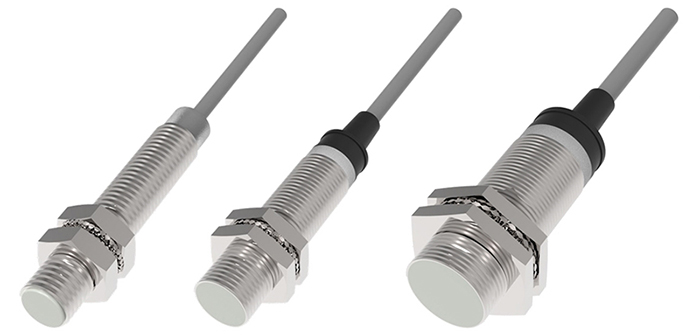What is a Magnetic Proximity Sensor?
Magnetic proximity sensor is a kind of proximity switch that is a position sensor. It can convert non-electrical or electromagnetic quantities into desired electrical signals by changing the positional relationship between the sensor and the object, so as to achieve the purpose of control or measurement.
Hall effect magnetic proximity sensor can achieve the largest detection distance with a small switch volume. It can detect magnetic objects (usually permanent magnets), and then generate a trigger switch signal output. Since the magnetic field can pass through many non-magnetic objects, this triggering process does not necessarily require the target object to be directly close to the sensing surface of the Hall magnetic proximity sensor, but the magnetic field is transmitted to a long distance through a magnetic conductor. For example, the signal can pass through the high temperature place to be transmitted to the magnetic proximity switch to generate a trigger action signal.

The magnetic proximity sensor’s working principle is similar to an inductive proximity switch. It contains an LC oscillator, a signal trigger, a switching amplifier, an amorphous, high-penetration magnetic soft glass iron core. This iron core causes eddy current losses to attenuate the oscillating circuit. If it is placed in a magnetic field, the eddy current losses that are affecting the oscillating circuit decay will decrease and the oscillating circuit will no longer decay. Therefore, the power consumption of the magnetic proximity switch increases due to the proximity of the permanent magnet, and the signal trigger is activated to generate an output signal.
The magnetic proximity switch can detect objects through plastic containers or conduits. In addition, it also can be used for object detection in high temperature environments, material discrimination systems, identification codes with magnets.
How to select a proximity sensor?
For detection of different materials and distances, different types of proximity switches should be used to make them play the best role in the application. For this reason, the following principles should be followed in the selection.
- If the detection body is a metal material, the high-frequency oscillation type proximity switch should be selected. This type of proximity switch is most sensitive to the detection of iron-nickel and A3 steel objects.
- If the detection body is a non-metallic material, such as wood, paper, plastic, glass and water, the capacitive proximity switch should be selected.
- If metal bodies and non-metals are to be detected and controlled at a long distance, photoelectric proximity switches or ultrasonic proximity switches should be selected.
- If the detection body is metal and the detection sensitivity requirement is not high, a low cost magnetic proximity switch or a Hall Effect proximity switch can be used.
Magnetic proximity switch buying guide
- Confirm the use environment. For example, whether it is used to detect metal objects or liquids, and whether the detected object is magnetic.
- Confirm the drive power type, DC or AC.
- The state of use. Normally open or normally closed.
- The type of intention. There are cylindrical, square, concave, convex and so on.
- The installation type. Enclosed or unshielded.
- The installation method. Guided, plug-in, linear, L-type.
- The detection frequency. That is, the number of detected objects per second.

